When I was a kid, I saw the traveling Lipizzaner show at our local university football field. Often, those who hear the name “Lipizzaner” recall classical training, classical riding, the famous Spanish Riding School in Vienna, Austria, and, of course, the airs above the ground. I was amazed to see live the quadrilles and the airs above the ground since I had only seen photos in books. Since then, I have always had a place in my heart for the breed, which is, in fact, named after the place of its origin—Lipica (the “c” is pronounced as a “z”), located in today’s Slovenia.
I was lucky enough to visit the Lipica Stud Farm last November. This is the time, after the tourist season is over, when the focus returns to training the horses. The head trainer at the farm, Igor Maver, finds great pride in working with the Lipizzaner horses who have been bred there since the farm’s beginnings in 1580. He has competed internationally, but was raised in the tradition of training Lipizzaners and is proud to be a part of their cultural heritage. The farm at Lipica not only upholds this heritage, but has many programs to share the unique Lipizzaner horse with the rest of the world. I had traveled to Lipica hoping to see the classical training system in action, and I witnessed it there, in a deeply traditional setting.
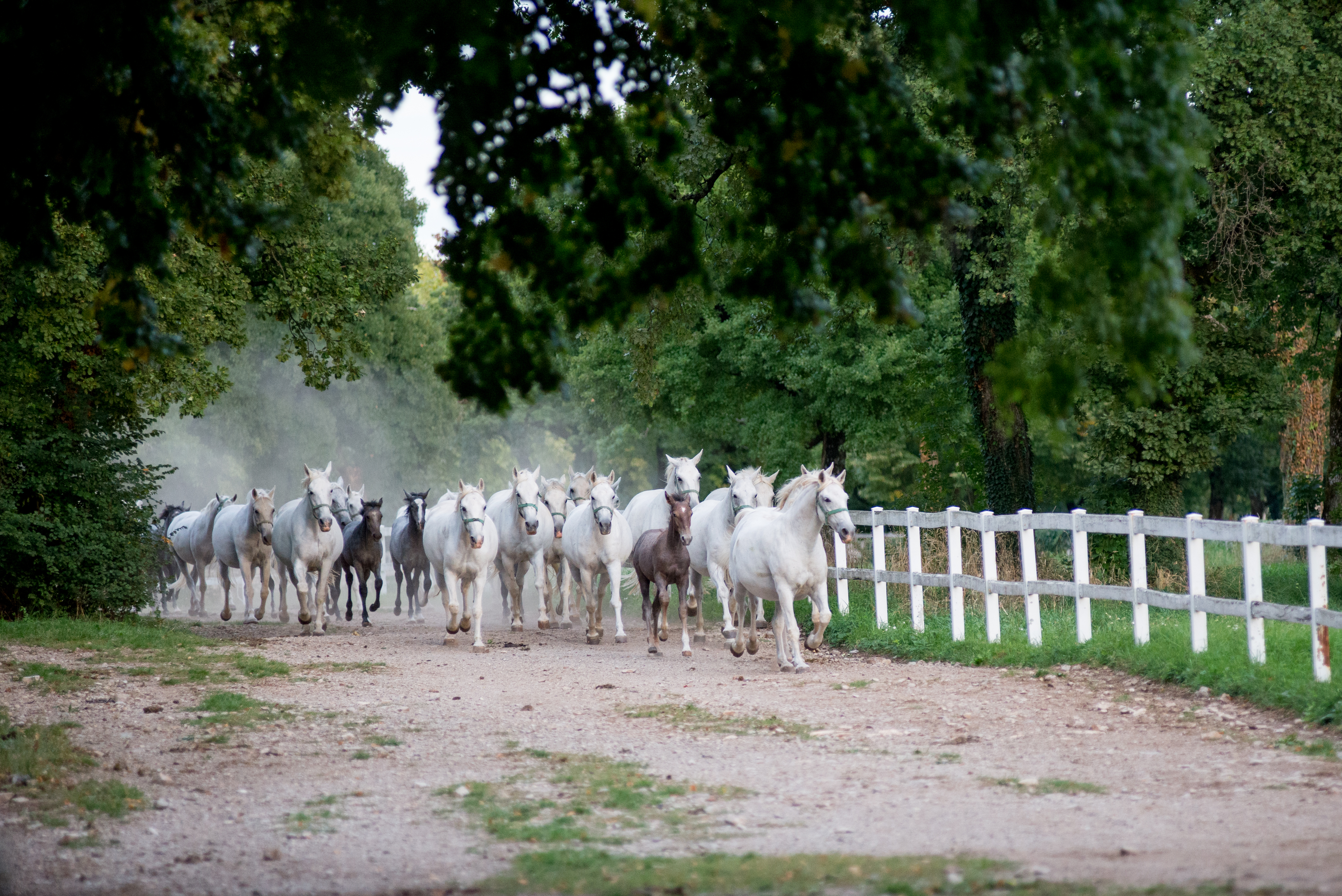

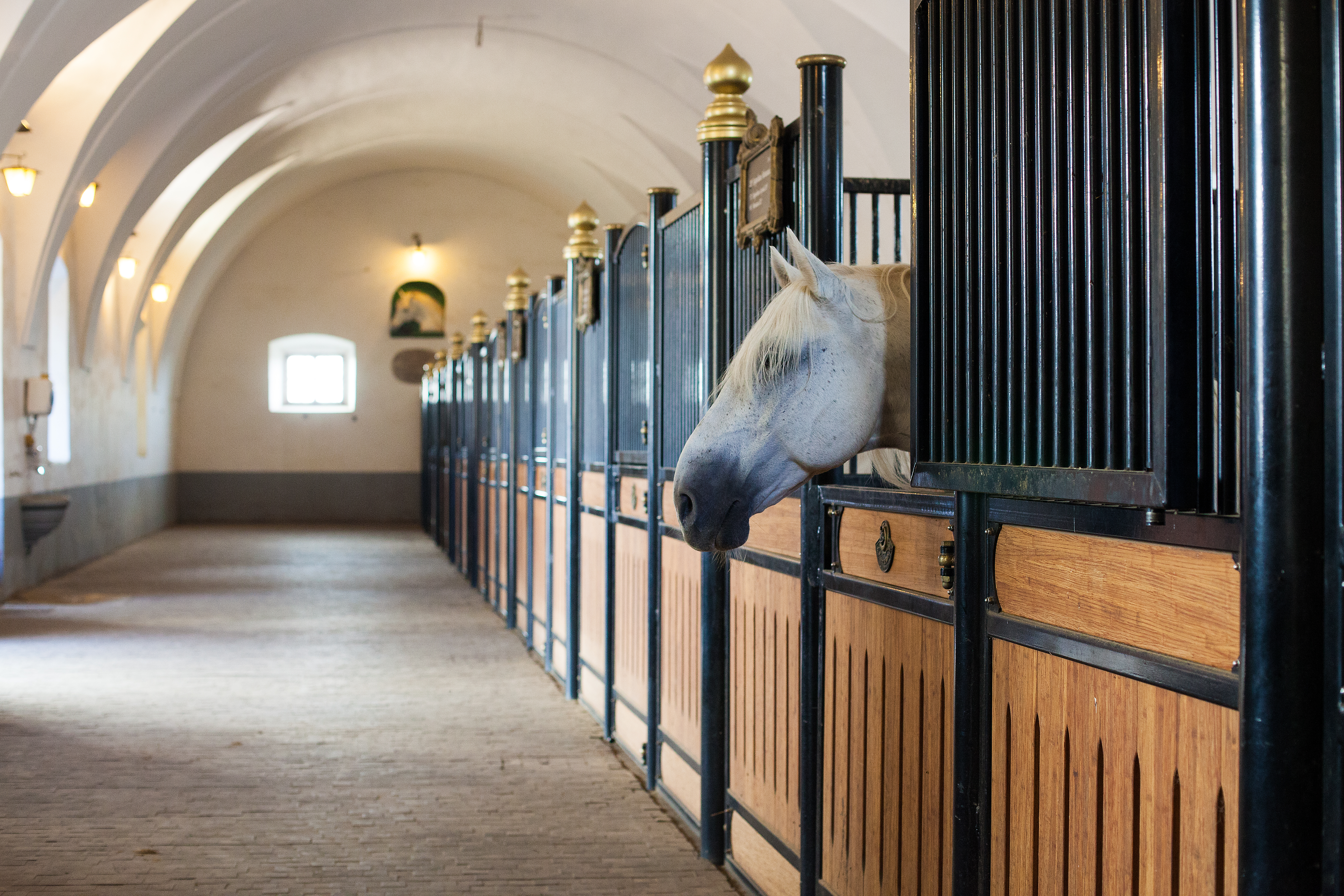
Visiting the Farm
As you enter the Lipica farm, you are first welcomed by the border of white fences lining the nearly endless fields and accented with rows of huge trees. The area is as lush and fragrant as a deep forest. Once you arrive at the center of the farm, you see many lovely yellow buildings. All are historically styled, and the setting is picturesque. A period mansion is located on the grounds as well as a chapel and other administrative buildings.
The farm is home to about 400 Lipizzaner horses. The mares and foals are often out in the pastures, but they have a large barn for the colder winter months. There is a historic stable called Velbanca (which means “vaulted” and appropriately describes the structure’s extravagant vaulted ceilings) that houses some performance horses. There are a variety of other barns that house younger stallions, stallions in training and the horses used for the shows.
The farm has a standard-sized show arena set up for public presentations of the Lipizzaner horses. There are bleachers lining one side for up to 700 guests and a set of pillars with Slovenian flags in the center of the ring. The farm presents a show three times weekly during the tourist season, which runs from the end of March to the end of October. During that time, they also offer trail rides, carriage rides and even lessons on Lipizzaner horses. The riders in Lipica sometimes collaborate with other riding schools in Europe for grander exhibitions and to develop a shared knowledge of the modern training of these traditional steeds. A CDI has also been held at the farm each summer since 1974 with dressage riders from all over Europe in attendance. This September, the World Driving Championships will take place at the facility.
I first visited the large stable. The stalls are painted red and have vertical bars all the way around the top half of each wall so you can view a sea of white faces and toplines across the many aisles of stallions. There are more than 100 horses in training on the farm. Besides the many riders, the staff includes the stall cleaners who make their rounds and two men assigned each morning to removing the daily stains that you can imagine tarnish the many white coats. The riders carry their tack, bustling in the early morning to prepare their horses for training. Besides the few horses each rider presents in the show, they each have a few younger horses in training.
In between rides, the riders meet informally at the little coffee machine near the doorway, where one can pick up a tiny, overly sweet coffee for .50 Euros and if you choose, smoke a cigarette. About half the riders are women. I didn’t quite catch what the riders spoke about around the coffee machine (I don’t speak Slovenian), but the gist of barn gossip was apparent. However, I could tell the comradery among the riders was strong.

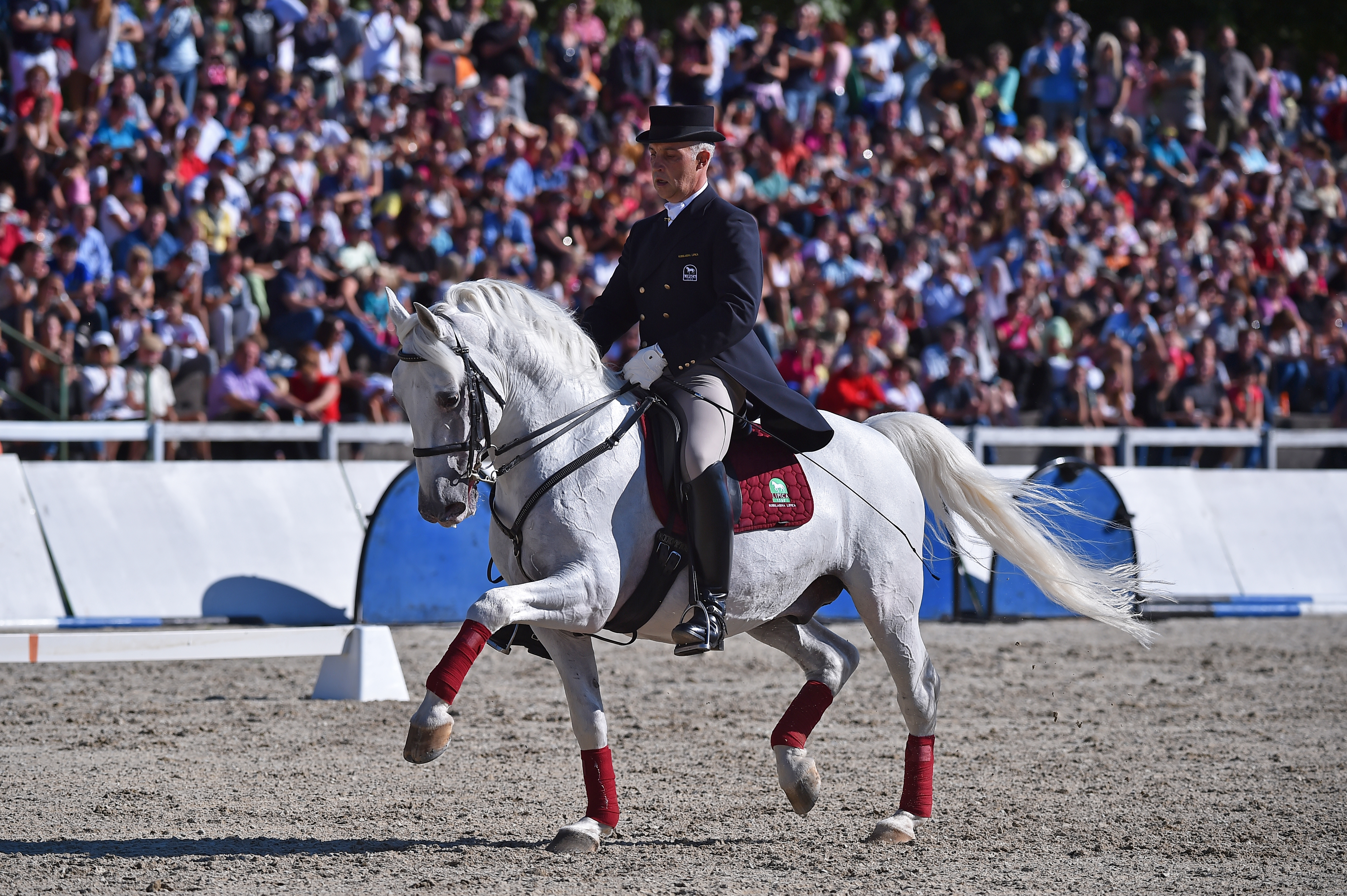
A Bit of History
Lipica was named after the beautiful tree that grows in the area: the linden. The land for the farm was purchased in the 16th century by the Habsburg Archduke Charles II as a breeding ground for military and civil horses. Over the next 200 years, the Lipizzaner breed was developed from selective breeding of Iberian, Italian and Arabian horses. Today, Lipizzaners are famous because they are the only horses used in the Spanish Riding School in Vienna. They are almost always gray and are known for their intelligence, strength and long lives.
The farm’s location endured a turbulent history. Lipica is in the southwestern part of modern-day Slovenia. It is directly east of the coastal city of Trieste, Italy, and located up in the highlands. After the stud farm’s initial inception, it grew and flourished until the Napoleonic wars caused instability in the area. When the 20th century arrived, the crises deepened with the two World Wars devastating the area.
The horses were relocated many times for their protection during the wars. At times, there was worry that the herd would be lost. When the Third Reich invaded the area in 1943, protectors of the Lipizzaners sent the herd to the Sudetes region of Czechoslovakia. In 1945, after the Yalta Conference, Czechoslovakia came under the rule of the Russians and there was fear the entire herd would never return to Lipica, destroying many generations of breeding and making the Lipica Stud Farm moot. However, U.S. Army Gen. George S. Patton, was informed of the fate of the Lipizzaner horse and, despite not receiving authorization to enter the territory, he took the initiative to remove the horses from Red Army rule and return them to land held by the Allies for their eventual homecoming to Lipica. The rescue also returned Lipizzaners who had been evacuated from the Spanish Riding School in Vienna and essentially saved the breed.
After World War II, the future of the farm was bleak until one man, Yugoslavian President Josip Broz-Tito, made it his mission to keep the farm from closing. The area became part of the former Republic of Yugoslavia in the 1970s and with the momentary political stability, the farm again flourished with a rise in tourist activities. However, the Balkan Wars threatened the farm further until Slovenia declared its independence in 1991.
In 1996, the government of Slovenia passed an act to protect the farm and the horses. The herd, the land, the historical buildings and arts are all declared a national monument and their cultural significance is protected by the state. The farm is dedicated to breeding, raising and training the Lipizzaner horses, caring for the property and maintaining the original Lipizzaner Stud Book.
The Lipizzaner Horse
The Lipizzaner Stud Book has been recorded since 1810 and shows the oldest entry of a mare born in 1738. The breed has six classical stallion lines, each with its own distinguishing features that are still active today. There were many classical mare lines and today 17 of the mare families still survive in the blood of the modern Lipizzaner.
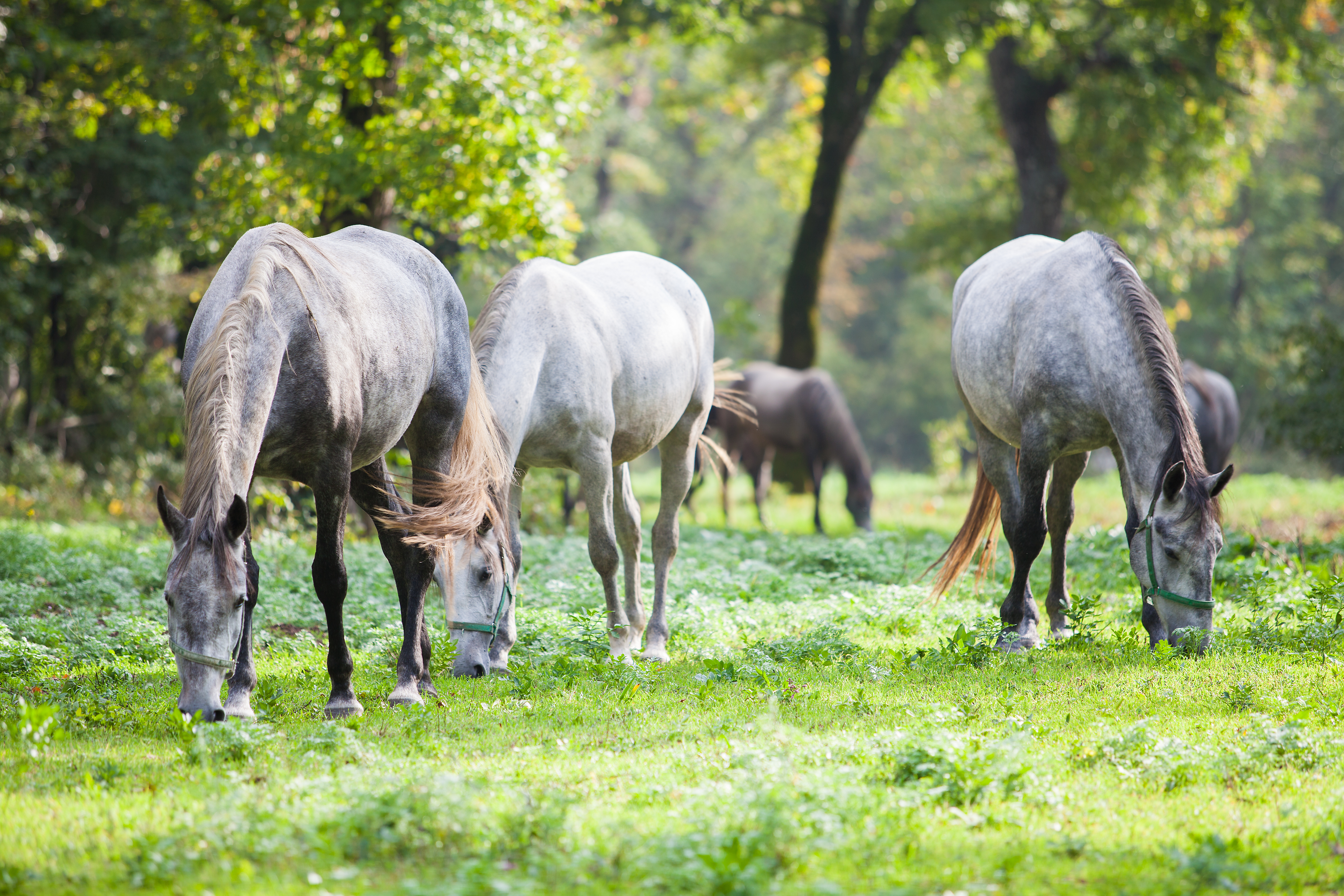
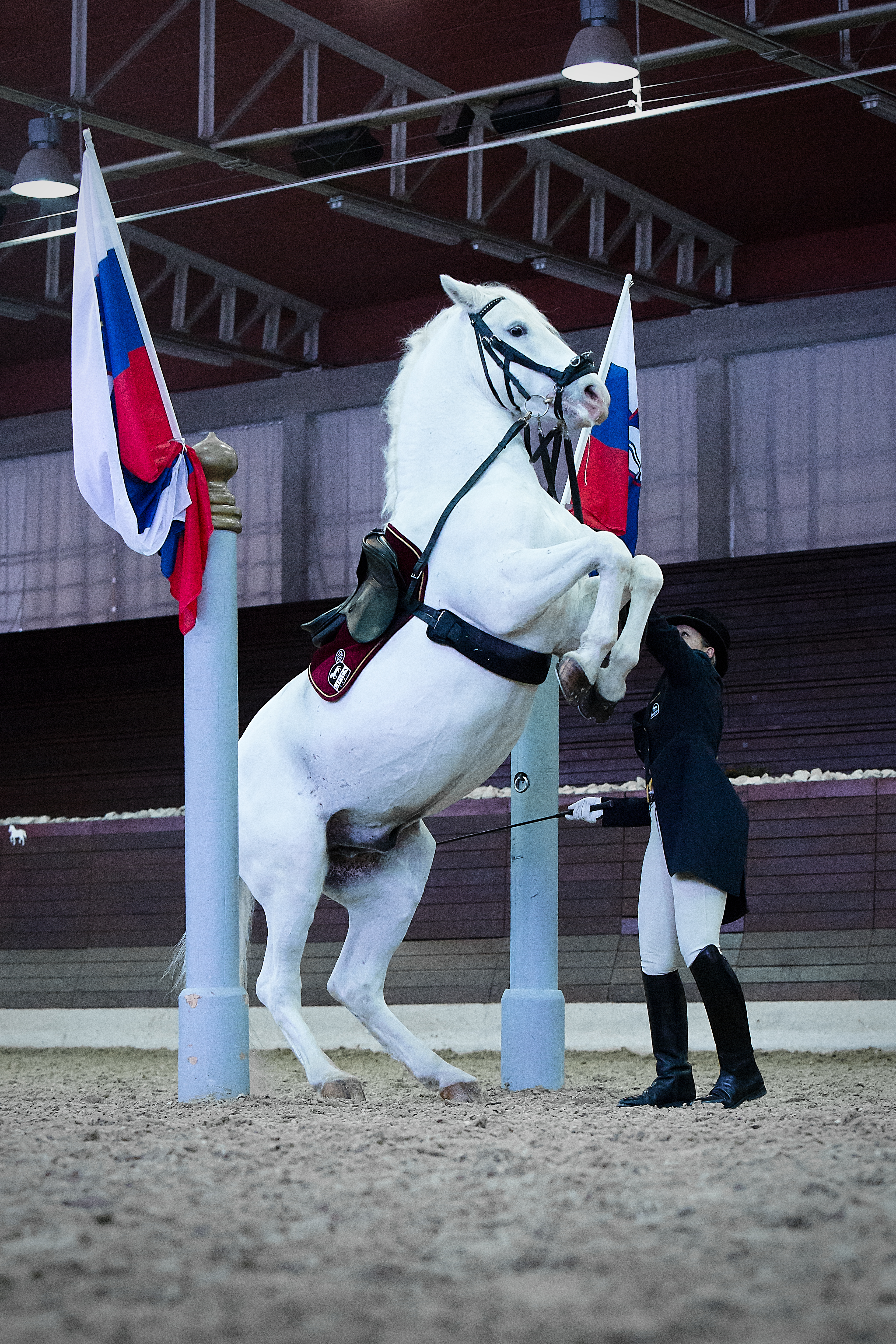
At Lipica, the farm breeds its own horses to carry on the original Lipizzaner bloodlines. Although there are many stallions on the farm, a specialized commission chooses stallions to breed each year. Its members determine which traits they want to see more of, which traits they want to see less of and which stallions can produce these traits to improve the herd. In other words, not even every breeding stallion will breed every year. The horses are bred to the mares at the stud farm and semen can be used by select breeders in Slovenia as well.
Lipizzaners are born dark but turn gray as they age. In Lipica, there is one rare black stallion named 331 Conversano Bonadea XXVI. The horses tend to have huge and liquid black eyes, small and expressive ears, cresty necks with long manes and a slightly convex shape to the face. They are handsome in an old-fashioned way. Their appearance and their training truly embody the meaning of the word “classical.”

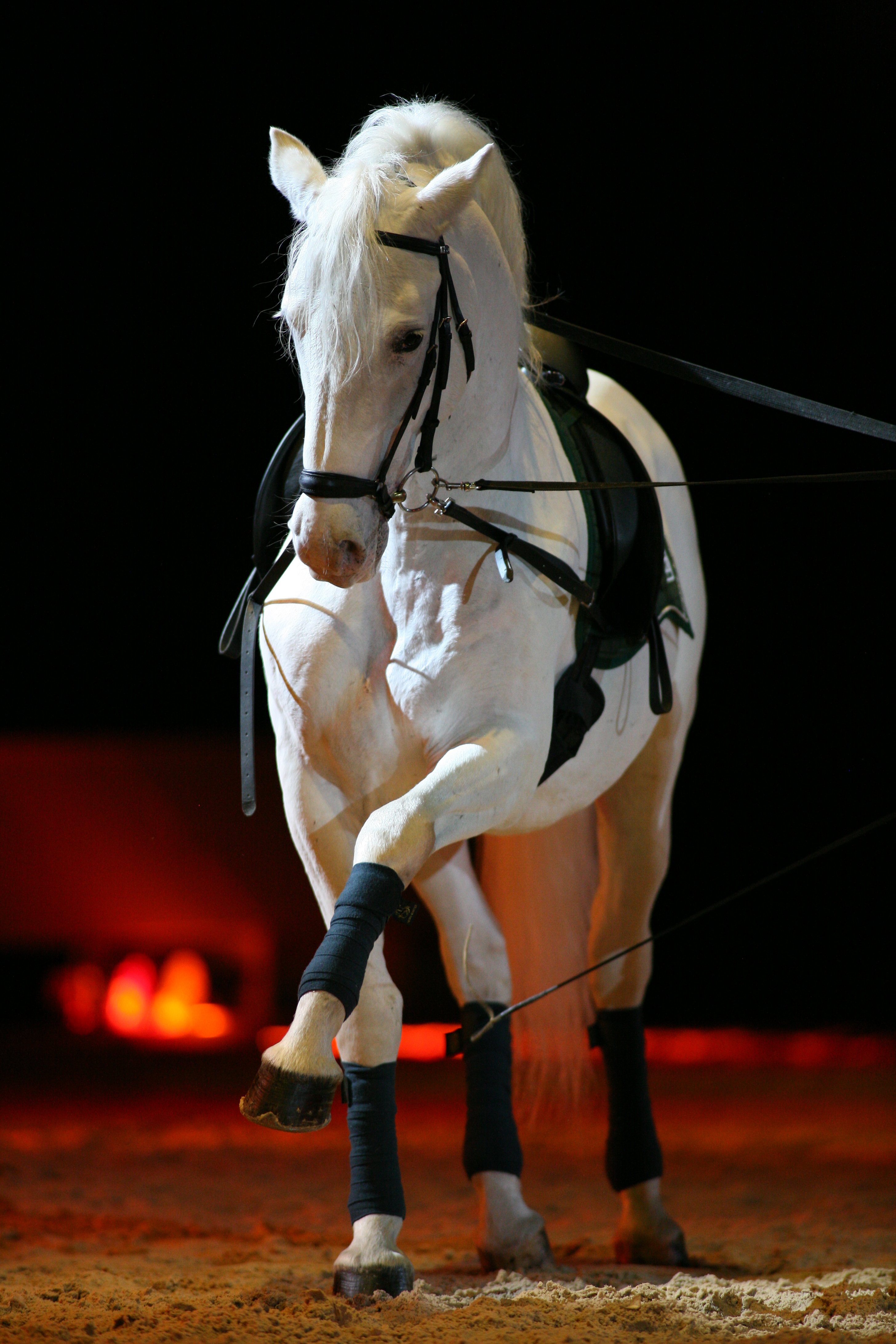
Training the Lipizzaner
The Lipizzaner horse is traditionally started as a 4-year-old. The training process is systematic and gradual. Each rider takes the time needed for each horse to develop at his own pace. After the horses are ridden and their strengths and weaknesses become apparent, the trainers determine if the horses will become part of the show or play another role on the farm. The stallions usually do not make it into the show until they are at least 6, but after that they can perform for many years. The oldest horse in the show is currently 22.
Besides the show arena, there are two other indoor arenas connected to the large stable. To enter the arenas during schooling, everyone gives a little whistle to alert the others that he or she is coming through the doorway. When I arrived at the arenas to watch, the master trainers were teaching a few mounted students at a time. Each rider is working his or her horse to achieve certain performance goals, and the instructors stand in the middle, shouting advice in booming Slovenian. All the horses are white, and at first it was hard to tell them apart, but as I absorbed the scene, I began to distinguish them. There was variety in their size and movement. They also have expressive faces and ears that show their emotions. In another arena, there were groups of two riders longing the young horses. Once the horses are used to the tack and ready to be mounted, the two riders work together to start the horses under saddle.
Some riders work with their horses mounted or in-hand to practice the airs above the ground. The way they explain the airs to the horse is fascinating. They use the same aids (natural and artificial) that all dressage riders have, such as the leg, seat, rein, voice, spur and whip. With the goal of the movement they want in mind, they coach the horse to produce the airs above the ground. The rider or handler must understand exactly how the horse must use his body to perform the movement and then he or she must put the horse into that position. When you see the stunning finished product, you can imagine that there is a deep mystery as to how they got the horse to suddenly be sailing through the air. Much the same way the rider puts the horse in the right position for the perfect transition from trot to walk, he puts him in that position for the perfect piaffe and then, for example, for the levade. The common airs above the ground include:
1. Levade: The horse sits and lifts both front legs off the ground in a low rear.
2. Pesade: A movement like the levade, but the horse stands up higher.
3. Courbette: The horse rears and then hops forward on his hind legs, staying somewhat vertical.
4. Capriole: The horse rears then leaps forward off the ground, as if jumping an invisible jump, and kicks out with his hind legs.
Head trainer Maver looks on as the riders work with their horses. He is never shy to give his advice. Also, the collaboration among the riders in the school is important. Many riders needed help from the ground either with the young horses, the airs above the ground or in the form of lessons during regular training. The training process is supervised and the goals are clear, allowing each horse and rider to excel and to follow in the traditional footsteps of their predecessors, who have been training these magnificent white stallions in the same location for hundreds of years.
The finished product is the show, which consists of many parts, including the quadrille: four matching horses ridden by four shadbelly-clad riders performing movements such as half-pass, shoulder-in and flying changes with choreographed accuracy. There is a solo act, with one horse and rider performing all the Grand Prix movements. A Grand Prix pas de deux may also be performed. The carriages arrive with a pair of Lipizzaners pulling each. This is the only time you may see a mare in the show. Pairs of mares sometimes pull the carriages, but as tradition dictates, they are never ridden in Lipica.
A new program called the “Osmica,” is sometimes included. This is a simple demonstration of eight young horses in the show ring. The goal is to allow the young horses to become used to the audience while allowing the spectators to see some of the up-and-coming horses.
There is also a sidesaddle demonstration with ladies demonstrating traditional sidesaddle riding. The attire is old-fashioned but sharp nonetheless. The skill required to perform the movements without a leg on each side of the horse is worth commending.
The final part of the show is the part everyone has been waiting for: a demonstration of the airs above the ground. Each is performed with the handler on the ground and demonstrates the absolute highest level of training possible for the horses.
My Ride
I was lucky to ride one of the Lipizzaners used in the show. His name is 188 Maestoso Slavina and he is 21 years old. Sitting on Slavina fulfilled an old childhood dream of riding one of the famous white stallions in the show ring between the pillars, which are used to train the horses for some classical movements, including the airs above the ground. He was broad and comfortable to sit on, almost like an armchair. He was sensitive and energetic to the leg and seat aids and gave a natural and round feeling in the connection. He felt noble, as if he knew his job and enjoyed doing it. I felt honored to ride him.
I had asked Maver what he liked about the breed, and he said they have a special character. “They are not the easiest horses to work with, but when you get them, they are yours,” he said. Even though they do not have the biggest gaits in the dressage world today, they are fun to work with because of the challenge of understanding their unique personalities. They can act like a cunning pony or a royal horse, and finding how to go from one end of the spectrum to the other is what makes working with them distinct and fun.
For more information on the Lipica Stud Farm, visit lipica.org
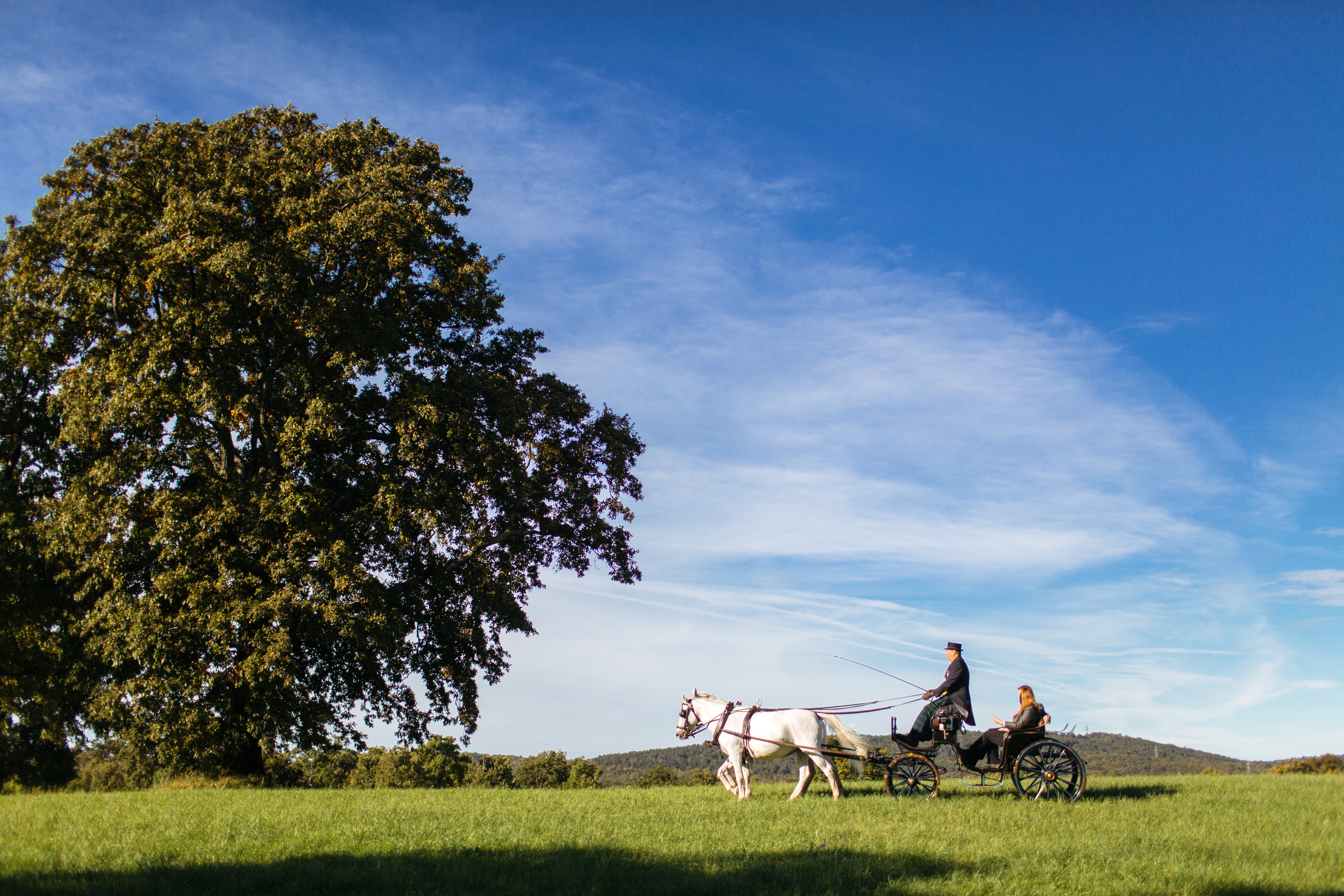
Annie Morris is a contributor to Dressage Today as well as a USDF Certified Instructor through FEI Level, a member of the Instructor Certification Faculty and a USDF gold medalist. She is a trainer and instructor at Monte Velho Equo-Resort in Santana do Campo, Portugal. She would like to thank Fabrizia Percacci, Tina Cic and Igor Maver for their generosity in helping her discover Lipica.











